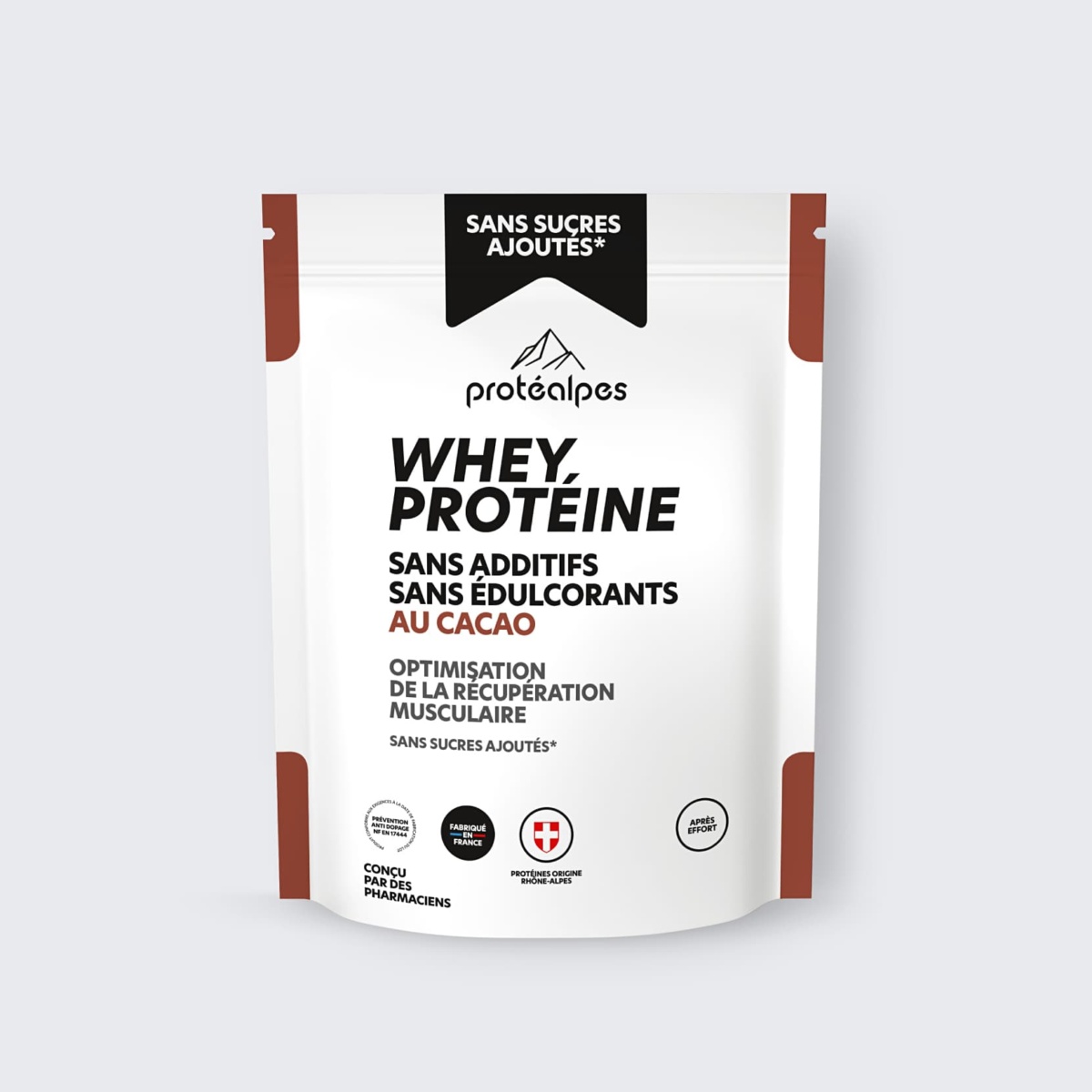The distinction between "going lean" and "losing weight" is an important one for athletes looking to refine their figure without compromising their performance.
While the aim in both cases is to reduce body mass, weight loss should not be seen as a low-calorie diet after a period of excess, but rather as a precise, calculated approach to optimizing weight loss by specifically targeting fat, while preserving muscle mass. We speak of "optimized" weight loss, where every kilo lost is almost exclusively composed of adipose tissue.
Muscle drying
Muscle drying is a specific training phase designed to reduce the percentage of body fat while preserving as much muscle mass as possible. This process generally takes place after a period of weight gain or to optimize sporting performance. The aim is not simply to lose weight, but to reveal muscles by eliminating the layer of fat that covers them, for a drier, more defined body.
The physiological mechanism behind dryness is based on the creation of a controlled caloric deficit. Faced with this deficit, the body will draw on its energy reserves, notably adipose tissue. The major challenge is to maintain this deficit at a level where the body primarily uses fat as an energy source, without triggering muscle catabolism.
For whom?
Muscle dryness mainly concerns three categories of people:
- bodybuilding and fitness athletes, for whom muscle definition is the ultimate goal;
- athletes in weight categories, such as wrestlers, boxers or judokas, who seek to optimize their strength/weight ratio in order to compete in a lower category without losing performance;
- Endurance and explosive athletes, who aim to improve their power-to-weight ratio. High-level rock climbers, for example, know that a 1kg reduction in body fat can significantly improve their performance.
How?
Effective muscle drying is based on three principles:
1. Controlled negative energy balance
The equation is simple in theory: create a caloric deficit by consuming less energy than the body expends. In practice, this deficit must be calculated precisely to avoid muscle wasting. In the dry period, a weight loss of around 0.7% of body weight per week generally represents a good balance.
2. Specific nutrition
Food intake during a dry period must be carefully planned:
- Protein: maintain intake (1.6-2g/kg of body weight) to avoid muscle loss;
- Carbohydrates: gradual reduction without total elimination (focus on low glycemic index carbohydrates);
- Lipids: gradual reduction without total elimination, with priority given to polyunsaturated fatty acids including omega-3s.
Protein powders enable athletes in the dry phase to effectively control their calorie intake while ensuring they have sufficient protein.
3. Adapted training
Training plays a central role in muscle drying.
Weight training helps stimulate the anabolic signal required for muscle preservation. Studies show, for example, that maintaining a caloric deficit when working with heavy loads helps maintain muscle mass.
Cardio, on the other hand, serves to increase daily energy expenditure. High-intensity methods seem particularly effective for burning fat while preserving muscle mass. But beware: while long endurance sessions during the dry period do indeed promote the use of fat as an energy source, they can also increase overall fatigue and compromise muscle recovery.
Good hydration facilitates the elimination of metabolic waste and optimizes cellular functions.
Beginning the weight-loss process requires discipline and patience. Unlike simple weight loss, it has a specific aesthetic and functional objective that requires a methodical approach.

Weight loss
In contrast to muscle leaning, voluntary weight loss aims at an overall reduction in body weight, without necessarily seeking to preserve muscle mass. It is generally aimed at a wider public, and has different objectives, mainly linked to health and the general aesthetics of the figure. Conventional weight loss generally involves a reduction in all body compartments: fat mass, muscle mass and water.
Classic weight loss is generally accompanied by a reduction in muscle mass, even if this is involuntary.
For many people, this approach is sufficient. An overweight individual seeking to improve his or her overall health will benefit from weight loss, even if this includes a loss of muscle mass.
Weight loss methods include various types of diet, such as food rebalancing or simply reducing daily calorie intake. These approaches are often complemented by moderate physical activity.
Unlike dry training, nutritional monitoring is less rigorous. Protein intake is generally lower, and the calorie deficit may be somewhat greater. This strategy can generally produce faster results on the scale, but is often far less favorable for muscle mass.
Beware of the yo-yo effect: the effect of rapid weight loss followed by weight regain, which is often even greater. It occurs mainly after excessively restrictive diets that lower the basal metabolic rate.
You should never be excessive in reducing your calorie intake, and should not aim to lose more than 2 kg per month.
As with weight loss, the approach should be gradual, and more akin to rebalancing your diet than to a strict hypocaloric diet.
How can you integrate lean principles into a sustainable weight loss approach?
It is possible to incorporate some of the principles of muscle drying into a more general weight loss approach.
The aim is to improve body composition (lean mass/fat mass ratio) but also to maintain a more active metabolism thanks to muscle preservation.
The key to successful, lasting weight loss is to gradually adopt a healthier lifestyle:
- create a moderate, calculated caloric deficit, then gradually increase your intake;
- increase protein intake;
- integrate adapted training;
- Maintain a balanced diet during and after the dry period, giving priority to low-processed, nutrient-dense foods. To function efficiently despite a reduced calorie intake, the body needs an optimal supply of vitamins and minerals. Vegetables, fruit, complex carbohydrates, unsaturated fatty acids and high-quality protein sources form the basis of the diet;
- maintain optimal hydration.
Conclusion
The distinction between muscle drying and classic weight loss is an important one for athletes. Drying aims to refine the body's silhouette while preserving muscle mass, while weight loss seeks to reduce overall body weight, often for health reasons and/or for very strong profiles.
Muscle toning requires a high degree of discipline in terms of both the dietary program and the amount of training per week. It is generally not recommended for beginners or people with a high level of body fat. In these cases, a more conventional weight-loss approach, possibly enriched with certain lean principles, will be more appropriate.
Hunger, fatigue and dehydration are risks to which you need to be particularly vigilant during a strict dry period. These side effects are generally less pronounced in a progressive weight loss approach. It is therefore essential to adapt your strategy to your level of experience and recovery capacity.














